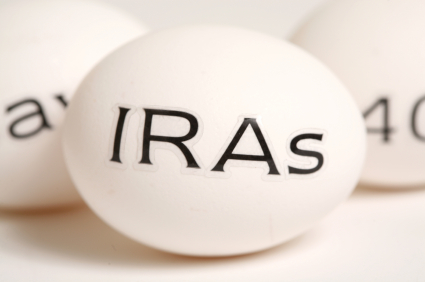Income Tax
IRS Splits Pub. 590 on IRAs: Here’s the Skinny on 590-A
Generally, your deduction for an IRA contribution is phased out if you are an active participant in an employer-sponsored retirement plan (or your spouse is an active participant, if married) and your modified adjusted gross income (MAGI) exceeds an ...
Apr. 09, 2015

Evidently, the sheer volume of the tax rules for IRAs is overwhelming, even for the IRS. Earlier this year, the agency announced that it was splitting massive IRS Publication 590 (Individual Retirement Accounts) into two separate publications, 590-A and 590-B, beginning with the 2015 versions used in filing 2014 returns.
Publication 590-A (Contributions to Individual Retirement Accounts) covers contributions to traditional IRAs as well as Roth IRAs. This publication also provides an overview of the rules for rollover and conversion contributions. Appropriately, Publication 590-B (Distributions from Individual Retirement Accounts) discusses the rules on distributions from both traditional and Roth IRAs. It includes rundowns on required minimum distributions and IRA beneficiaries.
This first of our two articles will focus on what’s new in Pub. 590-A. (Read the second article on Pub. 590-B)
Generally, your deduction for an IRA contribution is phased out if you are an active participant in an employer-sponsored retirement plan (or your spouse is an active participant, if married) and your modified adjusted gross income (MAGI) exceeds an annual threshold. The IRS adjusts the MAGI phase-out range each year.
For 2014 returns, the phase-out range is between $60,000 and $70,000 for single filers and $96,000 and $116,00 for joint filers. If one spouse is an active participant, the phase-out range is between $181,000 and $191,000 of MAGI. For 2015, the increases result in a range between $61,000 and $71,000 for single filers, $98,000 to $118,00 for joint filers and $183,00 to $193,000 when one spouse is an active participant.
Similarly, the ability to contribute to a Roth is phased out at upper income levels (regardless of active participation in an employer plan). For 2014 returns, the range is $114,000 to $129,000 for single filers and $181,000 to $191,000 for joint filers. The ranges increase to $116,000 to $131,000 for single filers and $183,000 to $193,000 for joint filers in 2015.
Pub. 590-A also explains a new interpretation of the once-a-year rollover rule in the wake of a new Tax Court case (Bobrow, TC Memo 2014-21). Under this ruling, the restriction only allowing one IRA rollover a year is applied to all IRAs owned by a taxpayer, as opposed to each separate IRA as previously stated in old Pub. 590. The IRS delayed implementation of this new rule until 2015.
However, the IRS says in Pub. 590-A that you can continue to make unlimited trustee-to-trustee transfers between IRAs because it is not considered a rollover. Furthermore, you can also make as many rollovers as you want from a traditional IRA to a Roth.
Practitioners will find this revised publication, as well as other IRS resources, to be helpful in guiding the tax plans for clients. An individual still has until April 15, 2015 to make an IRA contribution that is deductible on a 2014 return, but a filing extension doesn’t extend the due date for contributions.
To view the entire publication or to search for more details on any of these points, visit www.irs.gov/pub/irs-pdf/p590a.pdf. A subsequent article will be devoted to Pub; 590-B.
